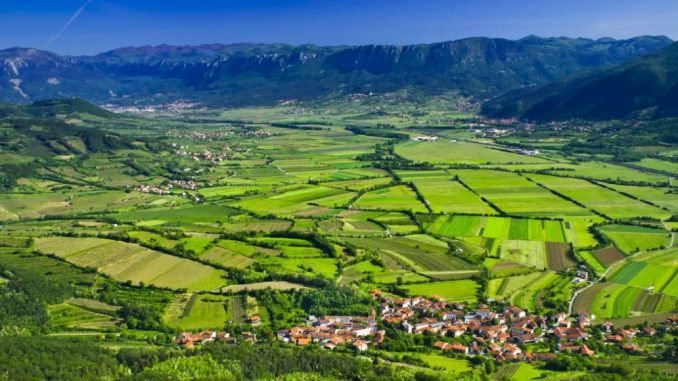
When visiting Slovenia, travelers are impressed by its vibrant history, beautiful nature, and rich culture. Many of the country’s castles and museums make visitors feel like they are traveling back in time. Slovenia’s pristine nature is full of mountains, rivers, and caves for visitors to discover. Here are the 15 must-see attractions when visiting Slovenia.
As one of the oldest coastal towns in Slovenia, and a major port, Koper is an integral part of the country’s infrastructure. This is yet another coastal spot that was once part of the Venetian Empire, and it formally went by the name Caprea. Later, it became part of Yugoslavia. Today, Koper is a lesser-known destination that nevertheless offers several enjoyable attractions. You can tour Tito Square, the heart of the city, explore the refurbished Praetorian Palace or climb the bell tower of Campanile for spectacular views of the city below. There is a free public access beach by the Koper Marina that is ideal for swimming or just enjoying a picnic in the sunshine.
Lake Bled is one of the most visited attractions in Slovenia. The beautiful views of the lake and the small island it surrounds brings thousands of visitors every year. The best way to reach the island is taking pletna, a traditional gondola in the Bled area. Once on the island, visitors must walk up ninety-nine steps to reach the island’s church. It is considered good luck to ring the church’s bell when visiting the island.
Searching for Ajdovscina rooms? Vipava Valley … Golden hues of ripening spill across the greenery. The air is heavy with the scent of apricots, peaches and ripe grasses. If valley days appear too hot, the Nanos, Gora and Trnovo Plateaus offer plenty refreshment, alongside the crystal rivers and springs. Tastings in superb wine cellars make for joyous evenings in good company. Whether hiking, biking, exploring or simply enjoying nature, the perfect summer day lies at your feet ….
Slovenia’s wine regions may not be well known internationally but a visit can be just as rewarding as exploring the wineries of Tuscany, and you’ll avoid the crowds. We visited the Vipava Valley just an hour’s drive south of the capital Ljubljana but it feels far away from city life. Here we discovered karst hills and vines heavy with grapes, terracotta roofed villages and gothic churches, gourmet food using local produce, and of course many excellent wines.
Our day began in Vipava, the principal town of the region, with less than 2000 inhabitants. In the main square men were drinking beer in the pavement cafes at 10am on a weekday and the town had a sleepy unhurried air. Rugged karst mountains, limestone protruding from the green-blue forest, are the backdrop to the town of simple but elegant white and pastel buildings all with terracotta roofs.
Ljubljana Castle offers the most beautiful views of Ljubljana. This sixteenth-century castle is easily accessible by foot or by taking a tram. On the top, the café and a restaurant in the castle’s courtyard are a perfect place to rest and enjoy a cup of coffee or taste traditional food. Ljubljana Castle also hosts several permanent exhibitions and offers guided tours.
The Romanesque-style Church of the Holy Trinity is located in a small village, Hrastovlje. It is most known for its seven-meter long fresco, The Dance of Death (Danse Mac). Until 1949, when discovered by Joze Pohlen, this magnificent piece of art was hidden under a thick layer of plaster. The Dance of Death portrays eleven skeletons leading eleven people (of different social status) to their grave, with the twelfth skeleton holding the coffin open for them. This art piece was created to remind people that we are all equal in God’s eyes.
BLED LAKE: Simply put, Bled Lake is one of the most romantic destinations on the continent. A crystal blue lake, protected by a castle overlooking the waters with a none-more-idyllic island in the middle, Bled Lake is a Disney scene come to life.
VIPAVA VALLEY: Vipava valley is the windiest region in Slovenia. Burja or bora wind, that blows at a speed of even 180km/h, helps drying prosciutto, keeps fog and clouds away but also causes some problems in traffic. Keep an eye on house roofs. Buildings have stones and rocks on their roofs to prevent the tiles from being blown off. The legend says that the bora wind was decisive factor in a battle in 394. What was the result of it? The Christianity became the only religion in the Roman Empire.. For rooms/accomodations please check Vipava valley rooms.
LOGAR VALLEY: A truly stunning glacial alpine valley, Logar Valley is located deep in the heart of the Kamnik-Savinja Alps. An excellent starting point for many gorgeous hikes, the natural sights of this area take the breath away.

Leave a Reply